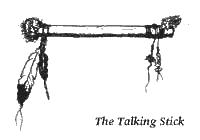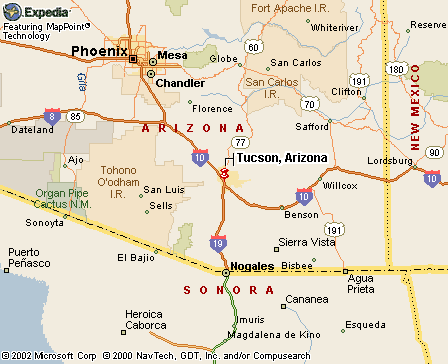|
|
Canku Ota |
|
|
(Many Paths) |
||
|
An Online Newsletter Celebrating Native America |
||
|
January 26, 2002 - Issue 54 |
||
|
|
||
|
Indian Ritual Helps Youths |
||
|
by Karina loffee Arizona
Daily Star-January 16, 2002
|
||
|
|
|
Every other Wednesday, a group of youths ages 8 to 18 gathers in south Tucson to take part in a talking circle, where they ask hard questions, listen to each other and, above all, celebrate their roots. On Fridays, a women's group meets, but the themes that surface there are often more serious, including domestic violence and partner abuse. The talking circles were formed after a study conducted by Su Voz Vale, a local non-profit group, found that Native Americans were not accessing social services, especially those pertaining to domestic violence. "We saw women were uncomfortable going to agencies that weren't run by Native Americans," said Veronica Boone, one of the talking circle leaders. Boone, a Navajo and Laguna Indian, got involved because the project provided a way for her to use her family studies degree from the University of Arizona to help her community. Talking circles were once a common sight on Indian reservations. But with urban migration, they, along with many other traditions, became harder to sustain. "The saddest thing is that no one is passing the stuff on," said Kristobal Fimbrez, a health educator at the Inter-Tribal Health Care Center. "Many (parents) get so tied up in working and taking care of their kids, they have no time to dedicate to upkeeping their traditions," Fimbrez said. The lighting of sage, sweet grass and cedar, traditional herbs used by tribes for centuries to cleanse the soul and provide good energy, mark the start of a talking circle. Then a stick, ornately decorated with beads and seashells, makes its way around the room, giving everyone a chance to speak. The themes range from definitions of power to what it means to be Native American in this modern age. "I like it," 10-year-old Adina Jose said. "Nobody ever asks me those questions. If they did, I would tell them. I like expressing myself." For others, it's chance to see friends. "I get to meet a lot of new people," 11-year-old Tierra Lee said. But Boone and Rebecca Edmunds, who also leads talks, understand that the youths connect to their culture. "They don't get it at home or at school or at the community at large," Boone said. If there was no talk about drugs and relationships, what's good and what's bad, "they would just accept what they see around them as the norm," she said. "And the pattern would continue." One woman, in her mid-20s, said she left an abusive relationship and is fighting for custody of her child. The stigma of seeking help is common, Fimbrez said. "Many of our youth think that asking for help is a weakness," Fimbrez said. "They hold it in until they just explode."
|
|
|
||
|
|
||
| Canku Ota is a free Newsletter celebrating Native America, its traditions and accomplishments . We do not provide subscriber or visitor names to anyone. Some articles presented in Canku Ota may contain copyright material. We have received appropriate permissions for republishing any articles. Material appearing here is distributed without profit or monetary gain to those who have expressed an interest. This is in accordance with Title 17 U.S.C. section 107. | ||
|
Canku Ota is a copyright © 2000, 2001, 2002 of Vicki Lockard and Paul Barry. |
||
|
|
|
|
|
The "Canku Ota - A Newsletter Celebrating Native America" web site and its design is the |
||
|
Copyright © 1999, 2000, 2001, 2002 of Paul C. Barry. |
||
|
All Rights Reserved. |
||

 TUCSON
- Using a Native American tradition, a Tucson group has embarked on
a campaign to help Native Americans in the community by giving them
a forum in which to voice their concerns.
TUCSON
- Using a Native American tradition, a Tucson group has embarked on
a campaign to help Native Americans in the community by giving them
a forum in which to voice their concerns.